By Patrick J. Chaisson
“Am over enemy submarine in position …”
Cut off in mid-transmission, this contact report came from a U.S. Navy patrol bomber operating over the Atlantic Ocean some 95 miles north of Cape Peñas, Spain, at 0316 hours on November 12, 1943. Repeated attempts to restore radio communications with the Consolidated PB4Y-1 Liberator, nicknamed Calvert n’ Coke, all went unanswered. Controllers finally listed the aircraft as overdue—presumed missing.
When Air Sea Rescue planes reached the Liberator’s last reported position, no evidence of the bomber or its 10-man crew could be spotted. Searchers did discover two fresh oil slicks—one large and one small—five miles apart. A fight to the death had occurred there, but it would take years for investigators to learn the truth about this fateful nighttime encounter.
The mysterious disappearance of Calvert n’ Coke marked just one incident in the three-year Bay Offensive, fought between Allied antisubmarine forces and the U-boats of Admiral Karl Dönitz’ Kriegsmarine during World War II. From June 1941 until August 1944, thousands of airmen and sailors patrolled the Bay of Biscay, an Atlantic gulf along the coast of France and Spain. Most of these sub hunters wore British Commonwealth uniforms, but several groups of American aviators also played an important role in this campaign.
[text_ad]
Ugly interservice rivalries, however, almost grounded the effort before it began. Senior officers in the U.S. Navy and Army Air Forces, deeply suspicious of each other and at odds over even the most minor matters of doctrine and tactics, seriously undermined the nation’s antisubmarine effort. Hard-pressed British commanders stood by helplessly while their American counterparts quarreled and postured. In the meantime, long-range strike aircraft pledged by President Franklin D. Roosevelt to join the Bay Patrol instead sat parked on U.S. runways.
The Bay of Biscay: “the Trunk of the Atlantic U-Boat Menace”
Following the fall of France in 1940, German submarine forces started operating from bases along the Biscayan coast. As the war intensified, upward of 100 U-boats sailed to and from massive concrete-roofed pens at Brest, Lorient, St. Nazaire, La Pallice, and Bordeaux every month. These undersea predators proved extraordinarily difficult to defeat and by 1941 were sinking a large percentage of the war matériel, fuel, and food that Great Britain needed to stay in the war.
Something had to be done about Germany’s U-boats, and soon. Air Chief Marshal Sir Philip Joubert, in charge of the Royal Air Force (RAF) Coastal Command, put his Operational Research Section (ORS) to work on the problem. The ORS consisted of British scientists and mathematicians charged with advising operational commanders on technological solutions. Already, ORS’s out-of-the-box thinkers could claim credit for developing a reliable magnetic detonator fitted to aerial depth charges and a more effective camouflage pattern for low-flying patrol aircraft. Their work on increasing the lethality of air-delivered antisubmarine munitions through improved explosive filler and shallower detonation settings had, by the middle of 1941, begun to pay dividends in angry North Atlantic waters.
Noting that a large percentage of U-boats transited the 300- by 120-mile Bay of Biscay en route to or returning from their patrol areas, Coastal Command analysts recommended launching an air campaign to catch them as they moved across this narrow sea corridor. Enemy submarines surfaced often to charge their batteries; it was while on top that these U-boats were most vulnerable to attack.
Air Marshal Joubert’s staff further observed that air patrols need not destroy subs to successfully combat them. The mere presence of Allied planes overhead would cause a prudent U-boat commander to crash dive immediately. Constantly submerging to avoid patrol bombers slowed a boat’s progress across the Bay (surfaced, a Mark VIIC U-boat could make 17 knots while its top speed submerged averaged only 7.3 knots), thus markedly reducing its overall operating range.
The Bay of Biscay, then, was where Allied airmen would most likely find a regular concentration of German submarines. Air Marshall Sir John Slessor, who replaced Joubert as air commander of Coastal Command in February 1943, described it as “the trunk of the Atlantic U-boat menace, the roots being in the Biscay ports and the branches spreading far and wide to the North Atlantic convoys, to the Caribbean, to the eastern seaboard of North America, and to the sea lanes where the faster merchant ships sail without escort.”
Finding the Right Aircraft For the Mission
Coastal Command’s No. 19 Group, flying from bases along England’s southwestern tip, took on the task of chipping away at that trunk. First, they needed proper tools for the job. Due to the distances involved (Cape Finisterre on the bay’s southernmost point measured 800 air miles from British airfields in Cornwall), long-range aircraft were essential. Patrol planes also needed to carry an adequate payload of 250-pound depth charges and fly fast enough to catch a surfaced U-boat before it could dive.
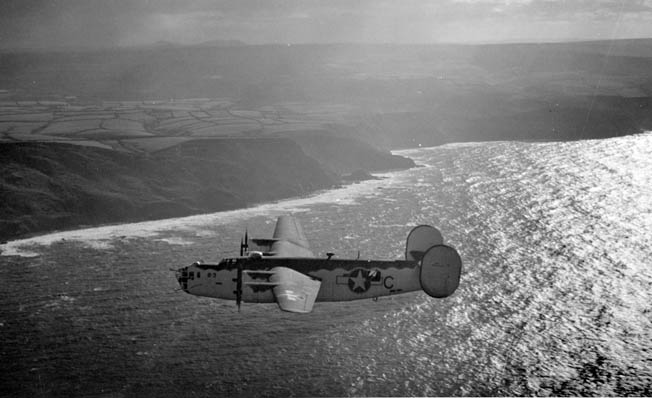
Multi-engined bombers, therefore, answered No. 19 Group’s requirements. Unfortunately, the Wellington, Whitley, and Halifax aircraft most suited for Coastal Command’s Biscay Offensive were also greatly sought after by RAF Bomber Command and its influential commander, Air Marshal Sir Arthur “Bomber” Harris. Joubert’s Coastal Command fared poorly in obtaining the necessary number of heavy bombers for antisubmarine work.
Flying boats like the Short Sunderland and American-designed Consolidated PBY Catalina possessed the necessary range, but their bulk and poor maneuverability limited these patrol planes’ utility against fast-diving U-boats. Coastal Command employed both types throughout the war with some success; however, another bomber then coming off U.S. assembly lines seemed a perfect fit for No. 19 Group’s Bay Offensive.
This aircraft was the Consolidated B-24 Liberator. Designed as a high-altitude strategic bomber, the Liberator’s impressive range, speed, and ordnance-carrying capacity also distinguished it as an ideal antisubmarine weapons system. In 1941 it represented the cutting edge of warplane technology; consequently, air chiefs everywhere wanted the Liberator for their own missions or theater of operations.
Hap Arnold’s Plans For an Independent Air Force
General Henry “Hap” Arnold, commanding the U.S. Army Air Forces (USAAF), was the man responsible for allocating land-based aircraft production. Arnold had an unenviable position—until American industry fully mobilized for the war there were never enough Liberators being built to satisfy global demand for these versatile bombers. And behind his amiable public façade, Hap Arnold kept a secret agenda regarding the Liberator.
For years, Arnold had been seeking to form an air force independent from the U.S. Army. The approaching conflict presented him with a unique opportunity to demonstrate how such a strategic bomber command could destroy the enemy’s industrial means to fight, thus decisively affecting the war’s outcome. To accomplish this mission Hap Arnold needed bombers, and plenty of them.
The first few Liberators sent to Great Britain through Lend-Lease went immediately to RAF Bomber Command. Only in late 1941 did Coastal Command receive a small allotment, which it immediately modified into very long-range (VLR) patrol aircraft. By this time U-boats were wreaking havoc on Allied merchant shipping, especially within a region called the Mid-Atlantic Air Gap, an area unreachable by land-based planes. One 12-plane squadron of VLR Liberators, each boasting a remarkable 1,150-mile patrol radius, soon began covering that gap.
But it soon became clear to the British that Hap Arnold was not about to offer up large numbers of Liberator aircraft despite an urgent need for them over the Eastern Atlantic. After the United States entered World War II, Arnold saw as his priority the need to build up the American strategic bomber force. Other users, such as the RAF and U.S. Navy, would have to wait until Liberator production capacity grew to meet their demands.
Allied Submarine-Fighting Technologies
The trickle of Consolidated Liberators flowing into Great Britain was paralleled by an exchange of British technological innovation with their American allies. One such device that greatly affected future operations in the Bay of Biscay was Air-Surface-Vessel (ASV) radar. In 1940, scientists at Oxford’s Clarendon Laboratories invented a microwave radio transmitter far superior to the long wave radar set then in use by British patrol planes and warships. Their “cavity magnetron” produced a 9.7 centimeter radio wave—a focused, high-resolution beam that, when mounted on an aircraft, proved highly effective at detecting surfaced submarines. As British manufacturers then lacked the capacity to mass produce this microwave radar, Prime Minister Winston Churchill agreed to share the technology with American engineers.
Called the Mark III by the British and the SCR-517 by American aviators, this new radar went into large-scale production by mid-1942. It came as a nasty surprise to the U-boat fleet as German warning receivers, calibrated for long-wave radar, could not detect its emissions. It took the Kriegsmarine two years and dozens of submarines lost before it fielded an effective countermeasure.
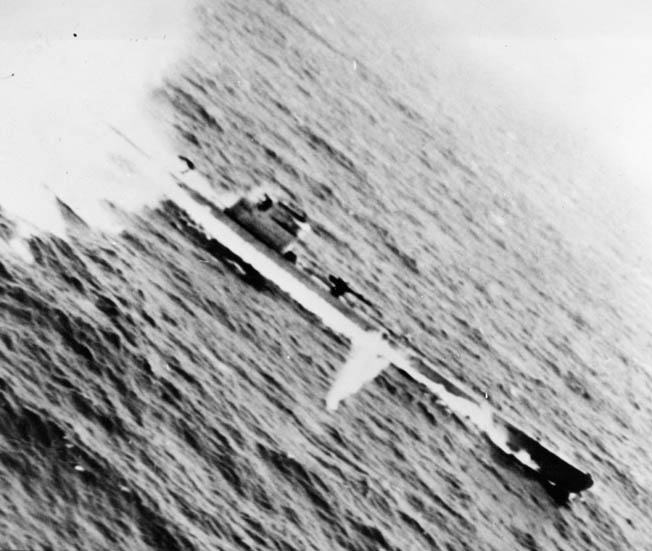
The Allies shared other sub-hunting innovations as well. The British Leigh Light, named for its inventor, a Coastal Command squadron leader, enabled Allied patrol planes to illuminate and attack U-boats at night. American-made radio altimeters proved crucial for maintaining a safe altitude over water during conditions of low visibility. Long-range navigation aids produced by both Allies assisted aircrews in accurately plotting their position over the vast Atlantic Ocean.
More top-secret antisubmarine devices in development included the Magnetic Anomaly Detector (MAD), which recorded variations in the Earth’s gravitational field caused by a submerged U-boat. An air-dropped sonar sensor called the sonobuoy showed great promise, as did an acoustic homing torpedo nicknamed Zombie. But the sub hunters’ most effective technological breakthrough was also the most highly classified: ULTRA, the decryption of German military signal ciphers.
Thanks to ULTRA, Allied codebreakers could read nearly every order that Admiral Dönitz gave to his U-boat commanders. Consequently, Coastal Command knew when enemy submarine traffic in the Bay of Biscay was likely to increase. Further, a chain of radio receivers called Huff-Duff (which stood for High Frequency Direction Finding, or HF/DF) helped triangulate a U-boat’s location to within a few miles whenever it broke radio silence to report in or request orders.
Initially, production delays and reliability issues limited the effectiveness of these new weapons. By June 1942, only five Vickers Wellington bombers had been fitted with Leigh Lights, and British-built Mark III centimetric radar would not appear until March of the following year. Worse still, Air Chief Marshal Joubert’s Bay Offensive was in danger of collapsing due to an inadequate number of long-range, radar-equipped patrol bombers. In 1941, RAF Coastal Command warplanes managed to sink just one U-boat in the Bay of Biscay. By the end of 1942, that number climbed to a mere seven submarines killed for thousands of flight hours spent patrolling the bay.
If Coastal Command did not yet possess suitable sub-hunting aircraft, there was an organization that did. The USAAF Antisubmarine Command began to receive in the autumn of 1942 factory-new B-24D Liberator bombers specially equipped to combat U-boats. Fitted with SCR-517 ASV radar, radio altimeters, and long-range navigational equipment, these aircraft were badly needed to reenergize Air Marshal Joubert’s Bay Patrol. It would, however, take British Prime Minister Winston Churchill’s personal intervention to get them into the fight.
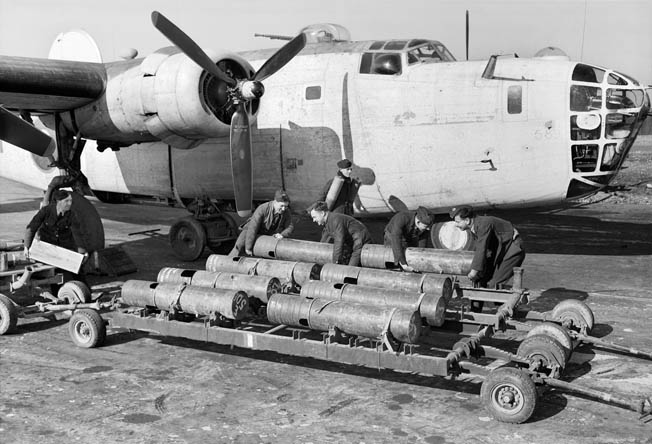
Bringing the USAAF To St. Eval
Writing to Harry Hopkins, President Roosevelt’s personal emissary, Churchill asked for a force of USAAF Liberators equipped with microwave radar to work with Coastal Command against U-boats in the Bay of Biscay. Roosevelt deferred the question to General Dwight D. Eisenhower, then commanding Allied forces in North Africa. Ike agreed to Churchill’s request with one caveat: that he reserved the authority to transfer USAAF antisubmarine aircraft from England to Mediterranean bases at any time. Starting on November 6, 1942, U.S.-marked sub-hunter B-24s started winging their way across the Atlantic Ocean toward Great Britain.
Just getting there proved no easy task. While the first three Liberators crossed without incident, ferocious winter storms battered another flight of six planes so badly that five of them had to turn back. One B-24 disappeared without a trace, while the remaining four regrouped to make an arduous but safer journey along the South America-Africa-England route. By November 27, the 1st Antisubmarine (A/S) Squadron occupied its new home, RAF Station St. Eval in Cornwall. Its sister unit, the 2nd A/S Squadron, would arrive in early January.
Conditions at St. Eval proved less than ideal. First, no one knew the Americans were coming. Living and working conditions were Spartan; wartime RAF rations of brussels sprouts and cabbage were described by one USAAF airman as “unbelievably bad,” while gloomy English weather made staying warm a constant struggle. Compounding matters, St. Eval’s ramps and parking areas were already clogged by three squadrons of Coastal Command bombers as well as other RAF aircraft. No hangars existed for maintenance, so mechanics had to work outside. Darkness came early, as did winter winds that numbed the ground crews struggling to keep their planes operational.
Equally challenging was St. Eval’s distance from U.S. supply depots. Couriers drove all day to reach the nearest USAAF warehouse, which may or may not have had on hand the required replacement part. The newly arrived sub-hunter outfits also lacked trained radar repair specialists, postal clerks, and other administrative staff necessary to keep a flying squadron running smoothly. Eighth Air Force lent the A/S units some 66 support personnel until their own ground echelons landed in mid-January.
Readying the American Flyers For Combat
The 1st and 2nd Antisubmarine Squadrons quickly adapted to Coastal Command’s tactics and procedures. The Americans learned they would operate under No. 19 Group, flying missions of 10 to 11 hours in duration out to the Bay of Biscay and back. Veteran British aircrews advised the novice sub hunters on how best to approach a wily U-boat, using low cloud cover or the sun to avoid observation. The RAF also warned their USAAF colleagues about a dangerous new threat, long-range Junkers Ju-88 fighters that had been spotted over the bay recently.
After a brief settling-in period, USAAF Liberators began flying operational patrols on November 16. The Americans’ first attack on a U-boat took place on December 29, when Captain Douglas Northrop dropped 12 250-pound depth charges on a rapidly submerging sub. That vessel escaped unscathed from Northrop’s strike, as did another U-boat attacked by Lieutenant Walter Thorne’s B-24 two days later. In both cases, the U-boats were detected by ASV radar but managed to crash dive under a barrage of aerial explosives.
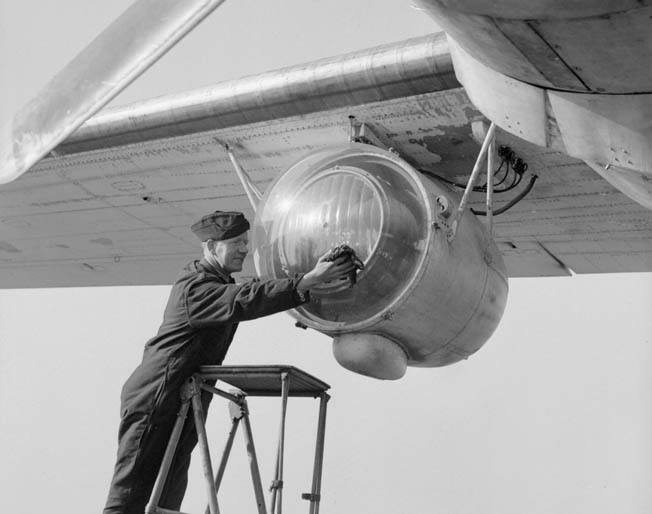
January was spent readying the 2nd A/S Squadron for combat. Also that month the 1st Antisubmarine Group (Provisional) was organized with Lt. Col. Jack Roberts (formerly of the 1st A/S Squadron) taking command. The group received administrative support from the USAAF’s England-based VIII Bomber Command but took operational direction from RAF Coastal Command’s No. 19 Group.
Operation Gondola
Coastal Command had big plans for the American sub hunters. From February 6-15, 1943, the Liberators participated with other No. 19 Group warplanes in Operation Gondola, a high-density patrol over the Biscayan approaches. Intelligence suggested that during this period the Bay of Biscay would be filled with as many as 40 U-boats, all unprepared for the long-legged B-24s and their powerful new radar. Ranging far out into the bay, these U.S. Liberators were likely to surprise the enemy in areas they previously believed were safe from air attack.
This new tactic paid off immediately. On February 6, 1st Lt. David Sands caught a U-boat on the surface but overshot the target in his excitement and missed. Sands then made a second pass but managed to drop only two depth charges due to jammed bomb racks. Three days later, another B-24 piloted by 1st Lt. Emmett Hunto dove on a submarine too late. Hunto’s ordnance detonated behind the rapidly submerging boat, which survived unscathed.
February 10 saw several attacks made by 2nd A/S bombers. First Lieutenant John Kraybill pressed in three times on a sub despite heavy antiaircraft fire, only to be frustrated by malfunctioning bomb racks. Lieutenant William Sanford’s Liberator, nicknamed Tidewater Tillie, enjoyed better luck. Catching an unwary U-boat off the Spanish coast later that same morning, Sanford dropped nine 250-pound depth charges on it in three passes. The German submarine was last seen settling by its stern, followed shortly by a large dome-shaped bubble of air rising to the surface. Admiralty officials scored the boat as “probably sunk,” later upgraded to a confirmed kill after ULTRA intercepted German reports indicating U-519 had disappeared in that region without a trace. The USAAF received its first credited sinking of the campaign.
Recent research indicates that Lieutenant Sanford’s crew actually struck U-752 on its way home from operations in the North Atlantic, inflicting minor damage. The fate of U-519 remains unexplained.
Operation Gondola showed what radar-equipped antisubmarine aircraft could do when employed in a maximum effort saturation campaign. During this 10-day surge Allied patrol planes logged 2,260 hours over the bay, resulting in 18 sightings and seven attacks. American B-24s accounted for 72 percent of all U-boat detections and 57 percent of attacks made, with Sanford’s strike on February 10 marking Gondola’s one credited kill.
The USAAF Withdraws From Biscay Operations
Coastal Command’s newly appointed commander, Air Marshal John Slessor, appreciated what these capable U.S.-crewed Liberators could do. Therefore, he was shocked when in March the 1st A/S Group unexpectedly pulled out of St. Eval. For their part, USAAF commanders understood that the sub hunters’ time in England would be temporary—they determined the U-boat threat in North Africa took priority over Coastal Command’s requirements and transferred their most combat-tested A/S outfit to Morocco in response.
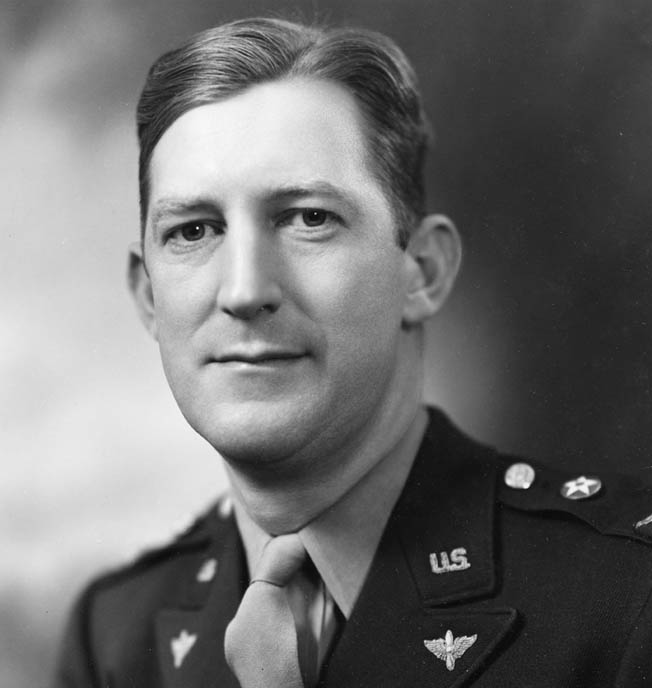
This abrupt reassignment deprived Slessor of a powerful asset just as his spring offensives, codenamed Enclose and Derange, were gaining momentum. No. 19 Group would have to carry on solely with British and Commonwealth air units, now receiving new Leigh-Light Wellingtons and four-engined Handley Page Halifax bombers equipped with centimetric Mark III radar sets. In March a squadron of British-marked antisubmarine Liberators also began flying out of St. Eval.
The coming of spring brought both milder weather to the North Atlantic and a corresponding increase in Allied convoy activity. As Admiral Dönitz’ submarines sortied out to strike those convoys, so did Air Marshal Slessor’s maritime patrol aircraft scramble to meet them over the Bay of Biscay’s constricted waters. British bombers sank one boat in March, two more during April, and an impressive seven subs caught transiting the bay during the height of operations in May.
King and Arnold’s Fight Over Anti-Submarine Missions
John Slessor derived great pride from the results of his Biscay Offensive, yet the energetic air marshal could not help but wonder how many more U-boats might have been sunk if a few American patrol bomber squadrons had “joined the party.” In June, Slessor traveled to Washington seeking a renewed U.S. commitment to his summer bay campaign, called Operation Musketry. He arrived to witness a long-simmering dispute over control of antisubmarine aircraft finally boil over between the chiefs of the U.S. Navy and Army Air Forces.
General Arnold and the Navy’s commander in chief, Admiral Ernest King, distrusted one another intensely. These two officers created and maintained a poisonous jurisdictional dispute regarding the employment of antisubmarine aircraft, a quarrel that extended back to the dark days following Pearl Harbor. While the U.S. Navy was responsible for protecting American coastal waterways, the only long-range aircraft then available for patrol and convoy escort duties belonged to the USAAF. In March 1942, Arnold agreed to temporarily place Army antisubmarine planes under naval control, at least until the Navy could obtain its own sub hunters. Yet neither Arnold nor King was happy with this arrangement.
The brilliant, irascible King saw Arnold’s increasing involvement in antisubmarine warfare as a grab for power, an attempt by the USAAF to intrude on what was traditionally a Navy mission. Hap Arnold feared the Navy’s interest in obtaining long-range Liberators was merely a cover for involving itself in strategic bombing operations, which he viewed as the Army Air Forces’ purview. For months the two chiefs danced like boxers around this issue, each spitefully rejecting any attempt at improving antisubmarine organization or cooperation.
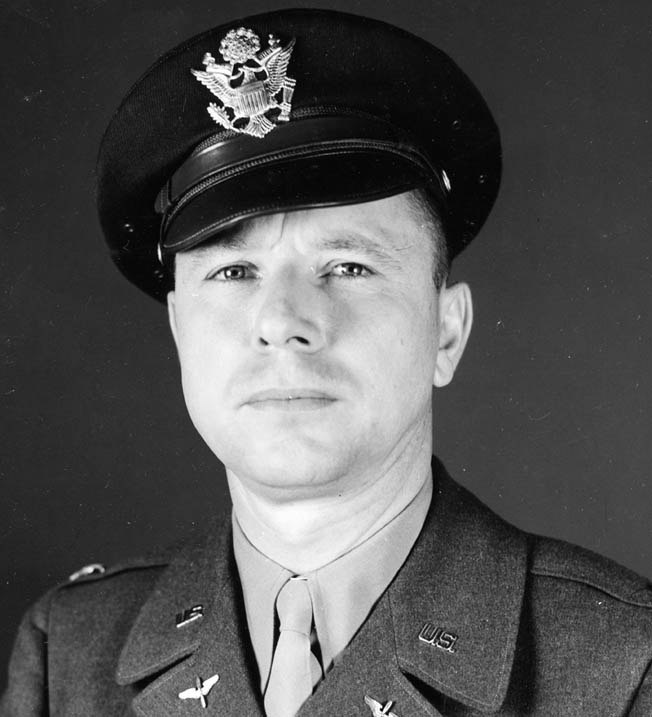
Opposing tactical doctrines provoked more ill feelings between the two services. Naval policy dictated that patrol planes closely guard merchant convoys, while USAAF guidelines prescribed a more free-ranging, offensive-minded air operation. King scoffed at the Army’s methodology, likening it to searching for a needle in a haystack. He further argued that by sticking to the convoys patrol planes would be more likely to find the U-boats stalking them.
On the other hand, naval district commanders kept USAAF sub-hunting aircraft out operating over their districts long after German U-boats had moved into more productive waters. Flexibility, the greatest advantage of aerial antisubmarine warfare, remained an unexploited asset so long as patrol bombers were prohibited from following their U-boat prey across sea district boundaries.
Negotiating a Resolution to the Conflict
The two sides may never have reached agreement if it were not for a new factory being built in Renton, Washington. In 1942, Boeing Aircraft raised this structure to make the Navy’s PBB-1 Sea Ranger patrol plane. General Arnold thought it would be better served manufacturing B-29 Superfortress bombers for the USAAF, and in exchange for the Renton facility offered the Navy a percentage of future Liberator deliveries. This deal meant the Navy would finally obtain a land-based patrol aircraft while the Army got its Superfortress plant.
The Navy took another step toward accepting full control of the American antisubmarine effort when, on May 10, 1943, Admiral King stood up the Tenth Fleet. It was a paper fleet, wholly without ships or airplanes, but one that represented King’s determination to finally defeat the U-boat peril. Tenth Fleet had as its charter the mission of directing and coordinating all Navy sub-hunter activities worldwide. Curiously, in all of Tenth Fleet’s organizational charts there was no mention of the U.S. Army Air Force’s Antisubmarine Command or its 286 aircraft.
What happened next surprised no one. In a June conference held between Arnold and senior naval officials, an arrangement was made in which the Army would turn over its antisubmarine-equipped B-24s in exchange for an equal number of unmodified Liberators originally allocated to the Navy. Admiral King formalized the pact, writing to Army Chief of Staff General George Marshall on June 14, “The Navy will be prepared to take over all antisubmarine air operations by 1 September 1943.”
26 U-Boats Sunk
This horse trade did not signal an immediate end to USAAF sub-hunter activities. While in Washington, Air Marshal Slessor had persuaded King to release the Army’s 479th Antisubmarine Group for duty over the bay. Four full squadrons of B-24s (the 4th, 6th, 19th, and 22nd A/S) were set to arrive at St. Eval starting in mid-July, while Navy Liberators (PB4Y-1s in naval parlance) would follow along as soon as their crews could be trained.
The American planes deployed just as Operation Musketry reached its operational crescendo. Much had changed since the first USAAF antisubmarine squadrons in England pulled up stakes four months earlier. Admiral Dönitz’ U-boats were now traveling surfaced in groups during daylight hours and slugging it out with Allied bombers thanks to new quad-barrel 20mm antiaircraft cannons hastily mounted to their conning towers. Even more dangerous was the air threat—swarms of Ju-88 heavy fighters prowling the bay in search of unwary patrol planes. German gunfire compounded the normal hazards of weather, fatigue, and mechanical malfunction faced by all Allied sub hunters.
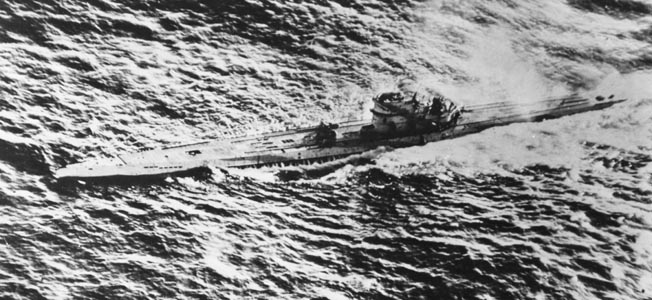
At least the situation at St. Eval had improved. Learning from past mistakes, Colonel Howard Moore’s 479th Group deployed with adequate maintenance, administrative, and logistics support. In August, the Americans moved to RAF Station Dunkeswell, 100 miles down the road in Devonshire. This newly constructed base, dubbed Mudville Heights by the airmen living there, would remain the hub of U.S. antisubmarine activity for the rest of the war.
Operational patrols commenced on July 13, and soon thereafter the 479th scored its first U-boat kill. On July 20, 1st Lt. Charles Gallmeier’s bomber surprised the surfaced U-558, delivering seven depth charges close aboard. The German vessel fought back, though, its well-aimed antiaircraft fire wounding one of Gallmeier’s gunners as well as disabling an engine. A British Halifax then finished off the U-boat, which went down with all 43 hands.
Team tactics resulted in another kill on July 28, when B-24s piloted by Major Stephen McElroy (commanding officer of the 4th A/S Squadron) and 1st Lt. Arthur Hammer joined a British Liberator to fight U-404 in an epic six-hour battle. The hard-fighting submarine damaged all three sub hunters before succumbing to a barrage of 27 depth charges.
The July Massacre ended for USAAF flight crews five days later when Captain Joseph Hamilton’s B-24 helped Canadian pilots sink U-706 about 400 miles west of the St. Nazaire sub pens. On August 2, Dönitz pulled the plug on his disastrous fight-back tactics. Hereafter, German submarines would hug the Spanish coast—where ASV radar proved less effective—surfacing only to recharge their batteries and then only at night. The Kriegsmarine also greatly restricted submarine operations, preserving its fleet while new wonder weapons were fielded—weapons that could change the course of the war.
Coastal Command’s summer Bay Offensive resulted in 26 U-boats killed by air between April and August 1943. Seventeen more had been damaged, significantly degrading the German Navy’s offensive capability. The U-boats were all but defeated, or so said Prime Minister Churchill when he boasted the Kriegsmarine had not sunk a single Allied merchant ship on North Atlantic convoy routes between May 1 and September 15, 1943. No. 19 Group contributed to this victory by whittling away at the Biscayan “trunk” with aggressive, coordinated attacks on enemy submarines.
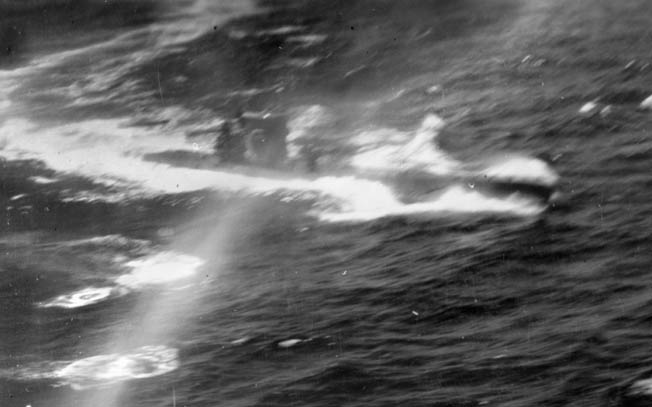
Ju-88s Strike Back
Sub-hunter aircraft continued to prowl the bay throughout August and September, but by then Dönitz’s remaining U-boats rarely ventured from their pens. Instead, patrol bomber crews faced increasing numbers of Luftwaffe heavy fighters—cannon-armed Ju-88s operating in packs. The USAAF’s first clash with them occurred on July 26, when a Liberator commanded by Lieutenant S.M. Grider encountered nine fighters over the bay. Thinking quickly, Grider escaped undamaged by ducking into some low-hanging clouds.
The Americans’ luck would not last. On August 8, marauding Ju-88s shot down Captain R.L. Thomas’ bomber, killing all aboard. Ten days later they pounced on another B-24, this one with the luckless Grider aboard as check pilot. Grider and his aircraft commander, Lieutenant Charles Moore, managed to successfully ditch their stricken plane, no simple task given the Liberator’s propensity for breaking apart upon hitting the water. Six survivors were rescued by a British warship after spending four days bobbing around the bay on life rafts.
Altogether, the 479th A/S Group lost four B-24s to enemy fighters during 16 recorded air-to-air encounters. American gunners claimed five German warplanes in return, demonstrating that these battles were not always one sided. Yet the USAAF’s ungainly patrol bombers made excellent targets for prowling Ju-88s despite Coastal Command’s efforts to provide escort coverage.
The Navy Takes Over For the USAAF
Into this hazardous operational environment entered a new group of aviators when on August 17 the first PB4Y-1 Liberators of U.S. Navy Bomber Squadron 103 (VB-103) touched down at St. Eval. After several weeks spent familiarizing themselves with Coastal Command procedures, the Navy crews moved to Dunkeswell where they relieved the soon-to-be disbanded USAAF sub-hunter squadrons. By September 5, the PB4Y-1s of VB-105 began arriving, with VB-110 closing on the United Kingdom starting on September 24.
They were commanded by Captain (later Commodore) William Hamilton of Fleet Air Wing Seven (FAW-7), who located his headquarters in nearby Plymouth. The Navy commenced operations on August 30, and by November 1 had taken over all patrol duties from the Army. Most USAAF antisubmarine crews received new combat assignments with the Eighth Air Force while their specialized B-24s were repossessed by Navy flying squadrons.
Although experienced at overwater navigation from previous assignments, these naval aviators soon discovered the Bay of Biscay held many unique perils. On September 2, skulking Ju-88s shot down a Liberator commanded by Lieutenant Kenneth Wickstrom; no aircrew survived. Two days later, a dozen German fighters mauled Lieutenant James Alexander’s PB4Y-1 off the Iberian Peninsula. Alexander somehow managed to ditch his bullet-ridden plane, enabling the 11 men aboard to escape into rubber dinghies. Rescued by Spanish fishermen some 36 hours later, they eventually returned to duty.
The Naval Technology War
There were few U-boats left for FAW-7’s flight crews to hunt. Husbanding most of its submarines for the coming cross-Channel invasion, the Kriegsmarine started to fit them with a revolutionary new defensive technology. The Schnorkel (German slang for “nose”) allowed a U-boat to operate submerged while still taking in air from above, thus theoretically eliminating the need for it to surface altogether. Allied commanders worried how their hundreds of aircraft and thousands of aviators would find submarines no longer visible on ASV radar systems.
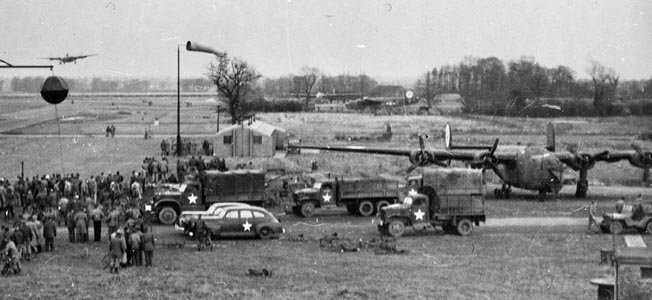
Navy sub hunters also introduced some new weaponry to the Bay Patrol. Their Liberators now carried sonobuoys, air-delivered sonar transmitters able to detect U-boats moving under water. Once the sub’s location was marked, PB4Y-1 crews could then drop a Zombie, also known as the Mk 24 acoustic homing torpedo, on their unsuspecting prey.
Furthermore, the “MADCATS” of VP-63 operated their Magnetic Anomaly Detector-equipped PBY Catalinas over the Biscayan gulf for a time. Airmen used this apparatus to identify the gravitational disturbance caused by a submerged metal object like a U-boat and then dropped depth charges on the contact. Their PBYs proved easy pickings for Luftwaffe fighters, though, and the MADCATS soon moved to the Mediterranean’s calmer waters where their specialized gear worked more effectively.
The Fate of the Calvert n’ Coke
Liberators of FAW-7 joined Commonwealth aircraft in an all-day encounter with U-996 on November 10. Caught on the surface by two Wellington bombers, this resilient U-boat then withstood attacks by three U.S. Navy PB4Y-1s before a Czech-manned Liberator disabled it with rocket fire. Unable to dive, U-996’s crew finally scuttled its sub two miles off the Spanish coast.
As mentioned previously, the last flight of Calvert n’ Coke took place on November 12, 1943, when that VB-103 Liberator failed to return from a night patrol mission. Naval officials listed all 10 members of Lieutenant Ralph Brownell’s crew as missing in action but did not solve the mystery of their unexplained disappearance until after the war ended. Investigators examining captured German war diaries discovered the airmen had, in fact, sunk U-508 on that lonely patch of ocean before meeting their doom.
In December, all three patrol squadrons took part in an unusual battle against German surface ships, catching the blockade runners Osorno and Alsterufer as they traversed the bay bound for Asian waters. Heavily escorted by German destroyers, the two raiders traded blows with Coastal Command aircraft for three days starting on Christmas Eve 1943. Punished by relentless depth charge, bomb, machine-gun, and rocket attacks from dozens of Allied warplanes, neither vessel made it to port. One VB-110 PB4Y-1, commanded by Lieutenant W. Parish, was shot down while making a low-level strike against the Alsterufer on December 26.
These moments of excitement notwithstanding, most missions over the bay passed uneventfully. “The chief enemy of the patrol plane pilot is boredom,” recalled VB-105’s Owen Windall. “Boredom begets inattention, then indifference. Hundreds of hours are spent at sea with nothing to look at but an endless expanse of waves and sky.” Other hazards included miserable winter weather, which contributed to the loss of several FAW-7 Liberators. Most of all, crewmen feared ice—if enough of it accumulated on the wings of their heavily loaded PB4Y-1s they would fall out of the sky without warning.
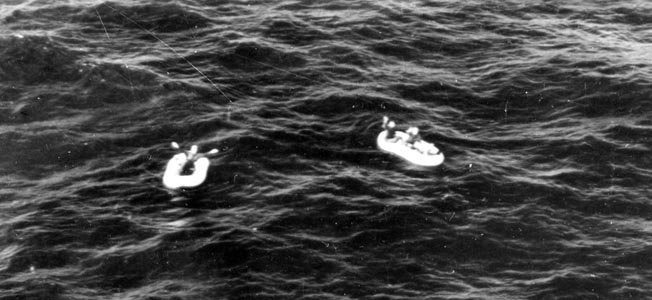
Operation Cork: Sealing Off the English Channel For D-Day
The first American U-boat kill utilizing Zombie munitions occurred on January 28, 1944, when a VB-103 Liberator nicknamed The Bloody Miracle caught U-271 on the surface west of Ireland. Lieutenant George Enloe and crew put six depth charges across the sub’s beam and followed up with a lethal homing torpedo after they observed the vessel crash dive beneath them. Strike photos revealed first evidence of a Schnorkel, troubling news for the Allies then preparing to invade Normandy.
For D-Day, Coastal Command, now led by RAF Air Chief Marshal Sholto Douglas, planned to seal off all approaches to the English Channel with saturation air patrols. The aptly named Operation Cork would, if successful, prevent Dönitz’ U-boats from getting anywhere near the Allied fleet by creating an “unclimbable fence” of air antisubmarine forces for them to face.
Reinforced for Normandy with 25 squadrons, No. 19 Group began flying Cork missions on June 5. Navy Liberators, temporarily augmented by detachments from Gibraltar-based VB-114, were assigned to patrol a region off the Cherbourg Peninsula. The pace was intense. Directed to cover individual sectors of ocean twice an hour, each squadron generated seven missions per day compared to two or three flown previously.
Forty-three of Admiral Dönitz’ Biscay-based U-boats sortied against the invasion fleet in the weeks following D-Day. They failed miserably. By June 23, Coastal Command planes had killed nine U-boats and damaged 11 more. Unable to move without being detected, the surviving non-Schnorkel-equipped submarines could only cower helplessly on the ocean floor. Just five vessels fitted with this new breathing device managed to make it past the escort screen, torpedoing three warships and five freighters before being driven off by British destroyers.
The Successful but Costly Bay Offensive
Thanks to Coastal Command, Allied forces were largely free to cross the English Channel without fear of U-boat attacks. In August, what remained of Germany’s submarine fleet in France transited the Bay of Biscay one final time as American ground troops approached their bases. The three-year Bay Offensive concluded victoriously for the Allies.
This triumph came with a heavy cost. During their time in England, USAAF antisubmarine squadrons lost 12 planes and 102 men due to enemy action, accidents, or causes unknown. Navy patrol bomber losses over the bay amounted to 16 aircraft and 157 crewmen. In return, American sub hunters received credit for sinking 13 U-boats from February 1943 to the end of Biscayan operations 18 months later.
United States antisubmarine aircraft played an unsung but vital role in this campaign. American technology and manufacturing capacity, including long-range Liberator bombers and the Zombie acoustic homing torpedo, contributed a significant amount of striking power to the Bay Patrol. Yet victory was ultimately measured by the determination, fighting spirit, and sacrifice demonstrated by thousands of Allied airmen. These aviators proved themselves to be the deciding factor in this deadly cat-and-mouse game fought between Coastal Command and German U-boats in the Bay of Biscay.
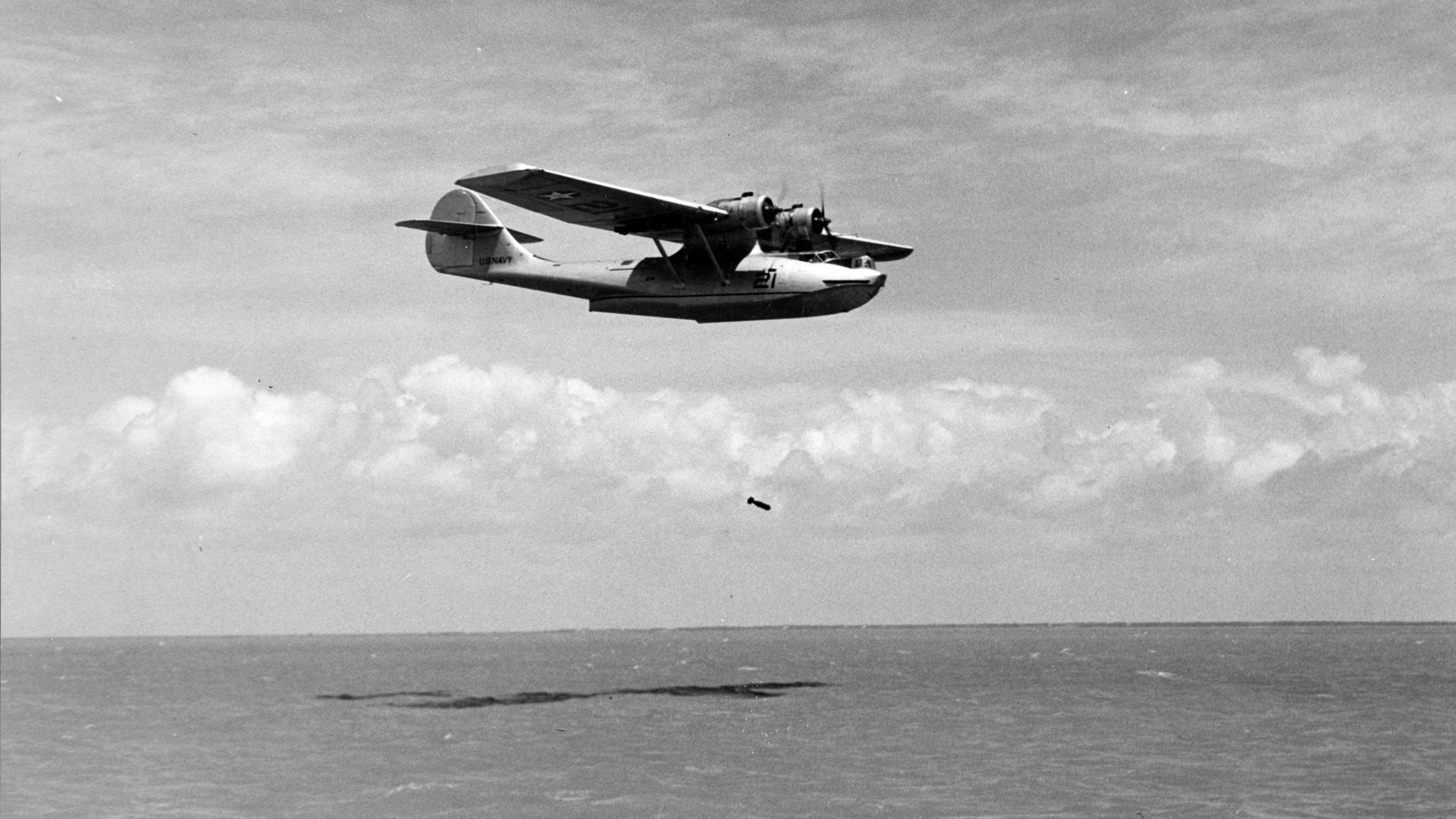
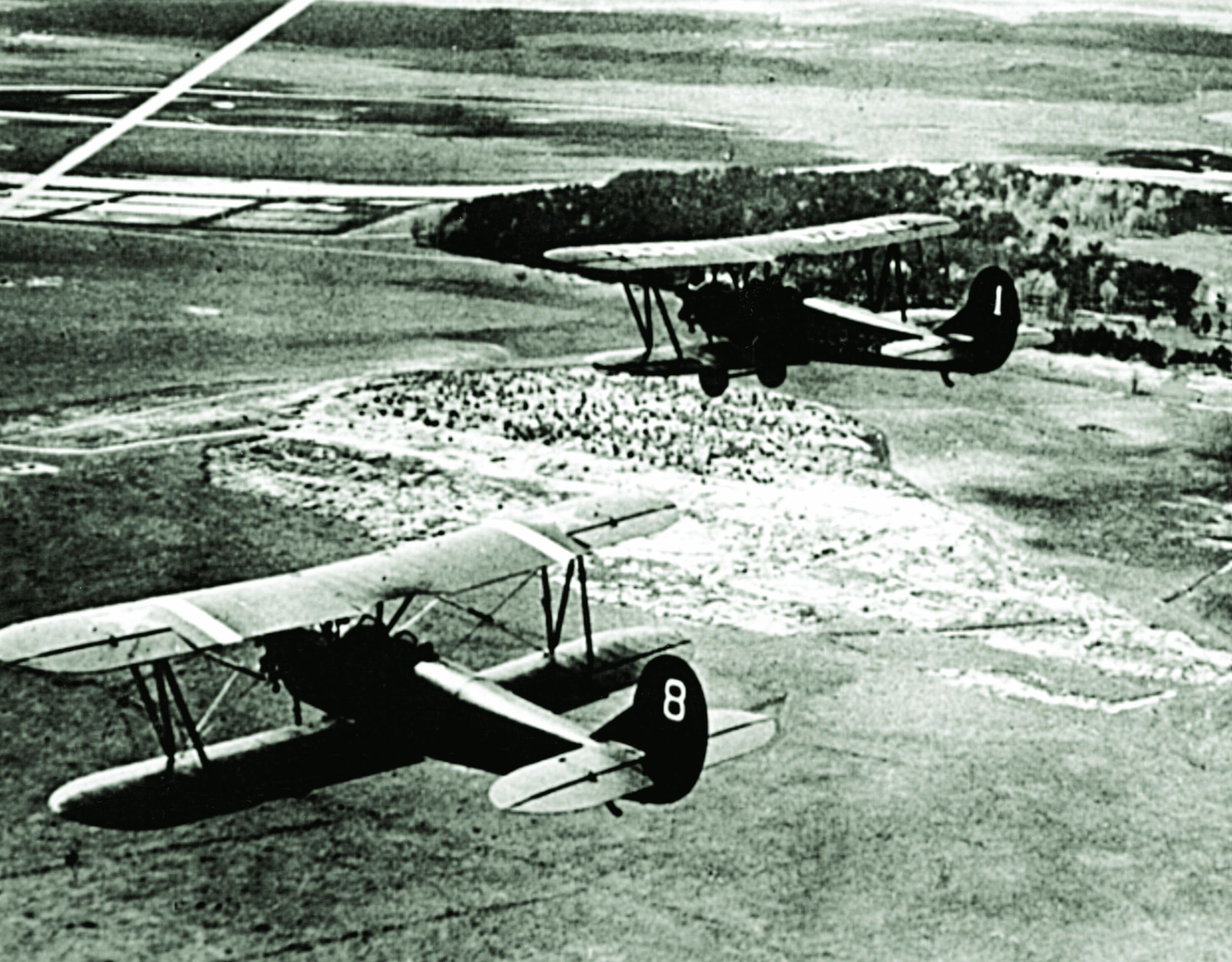
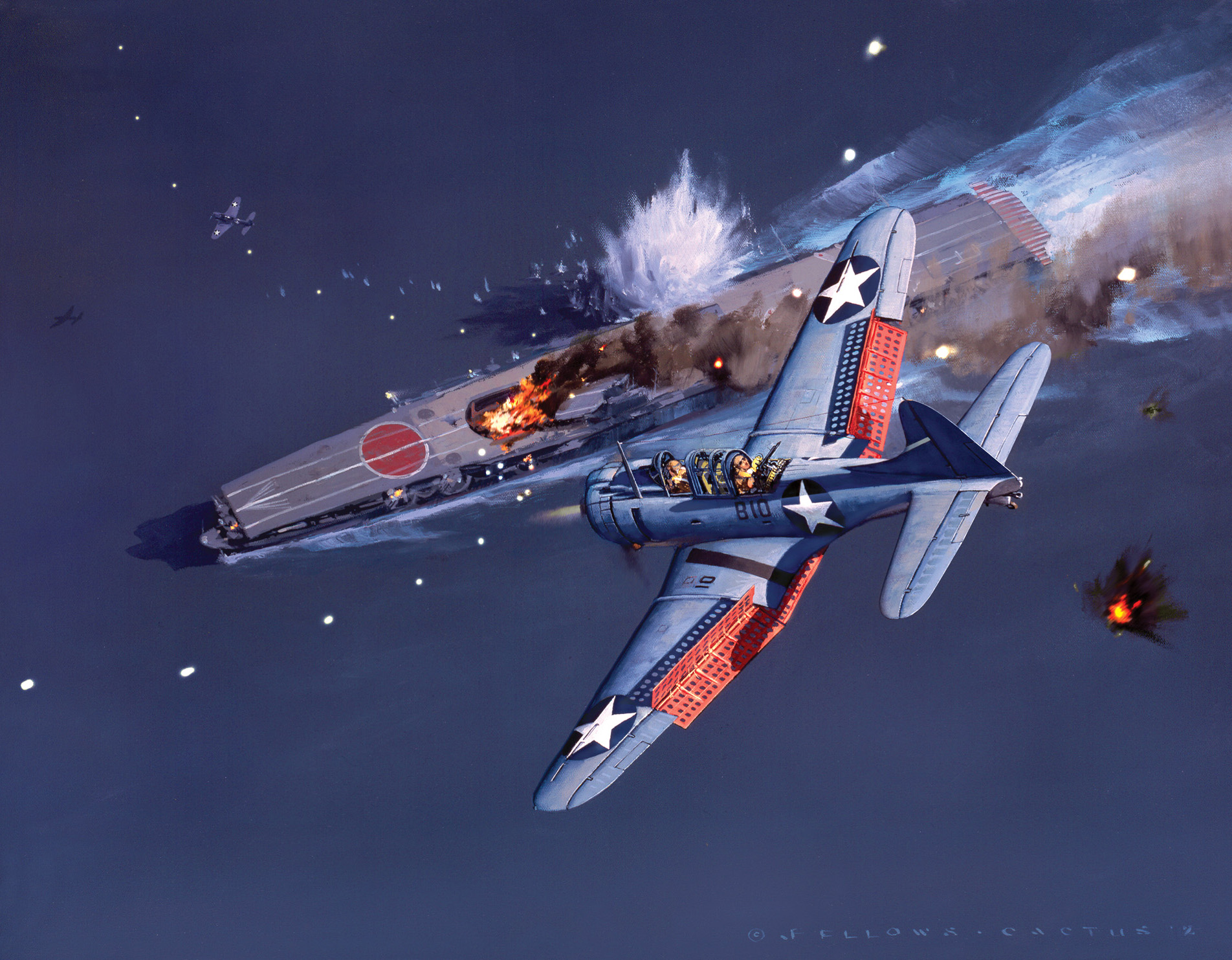
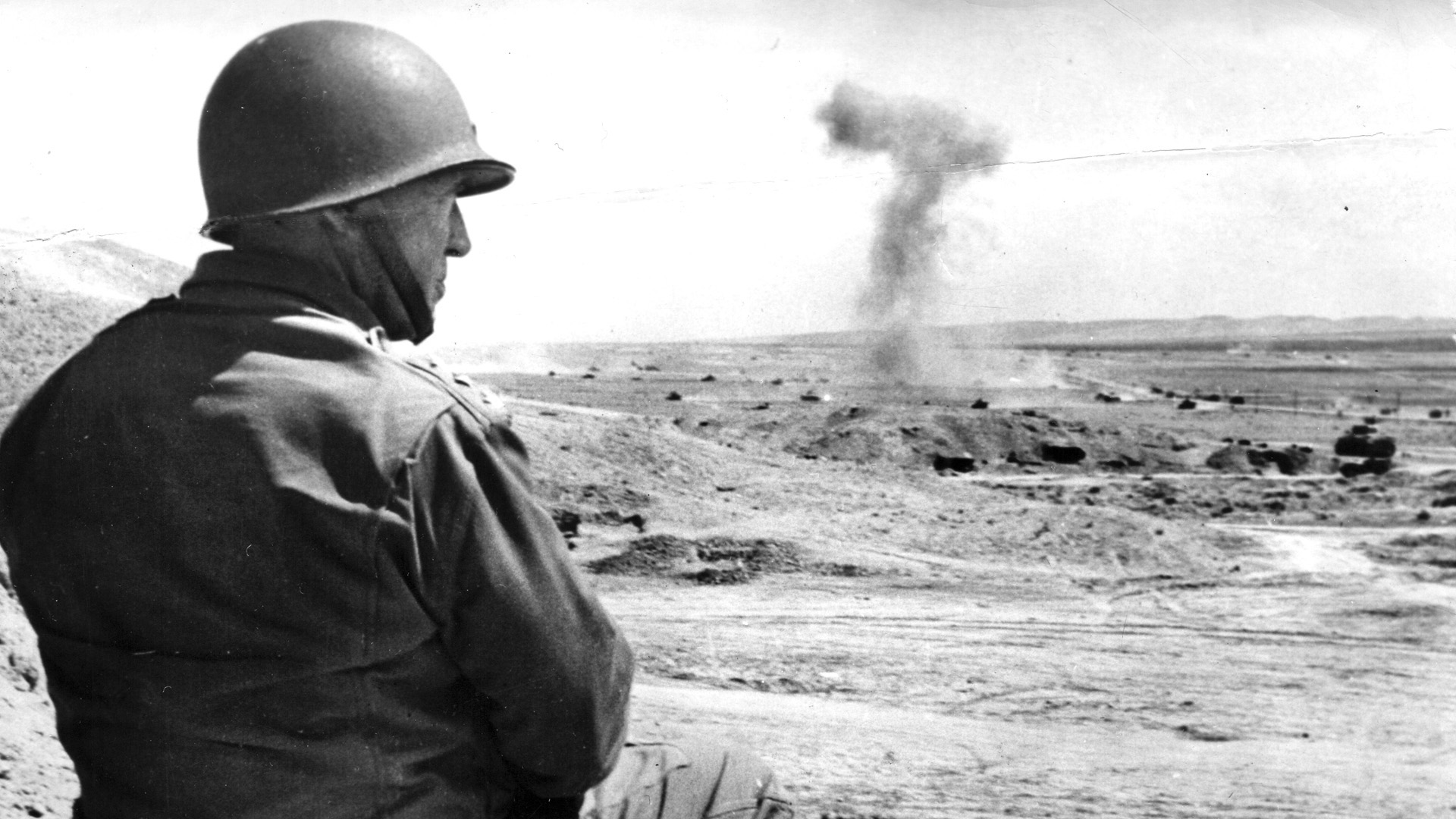
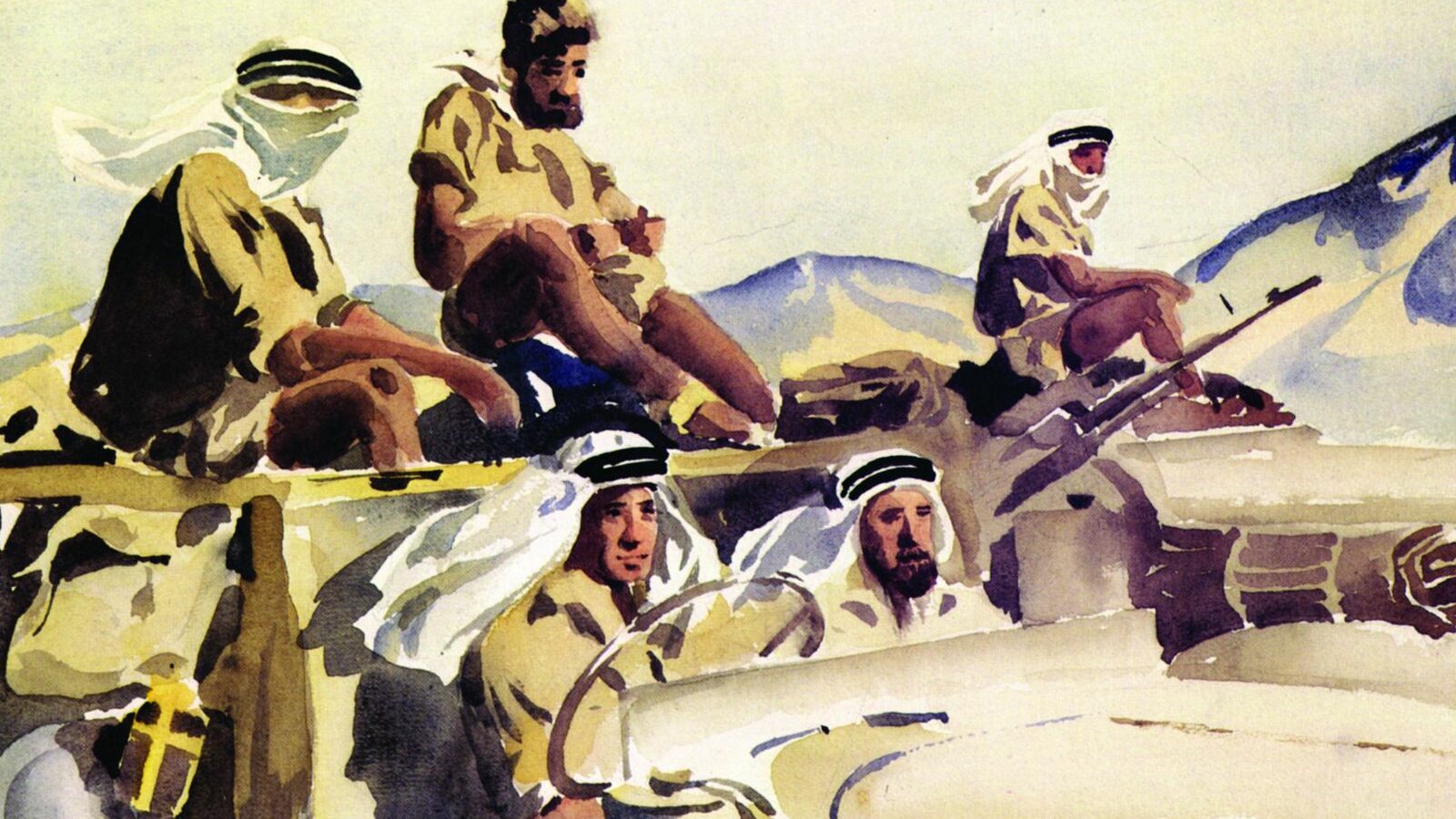
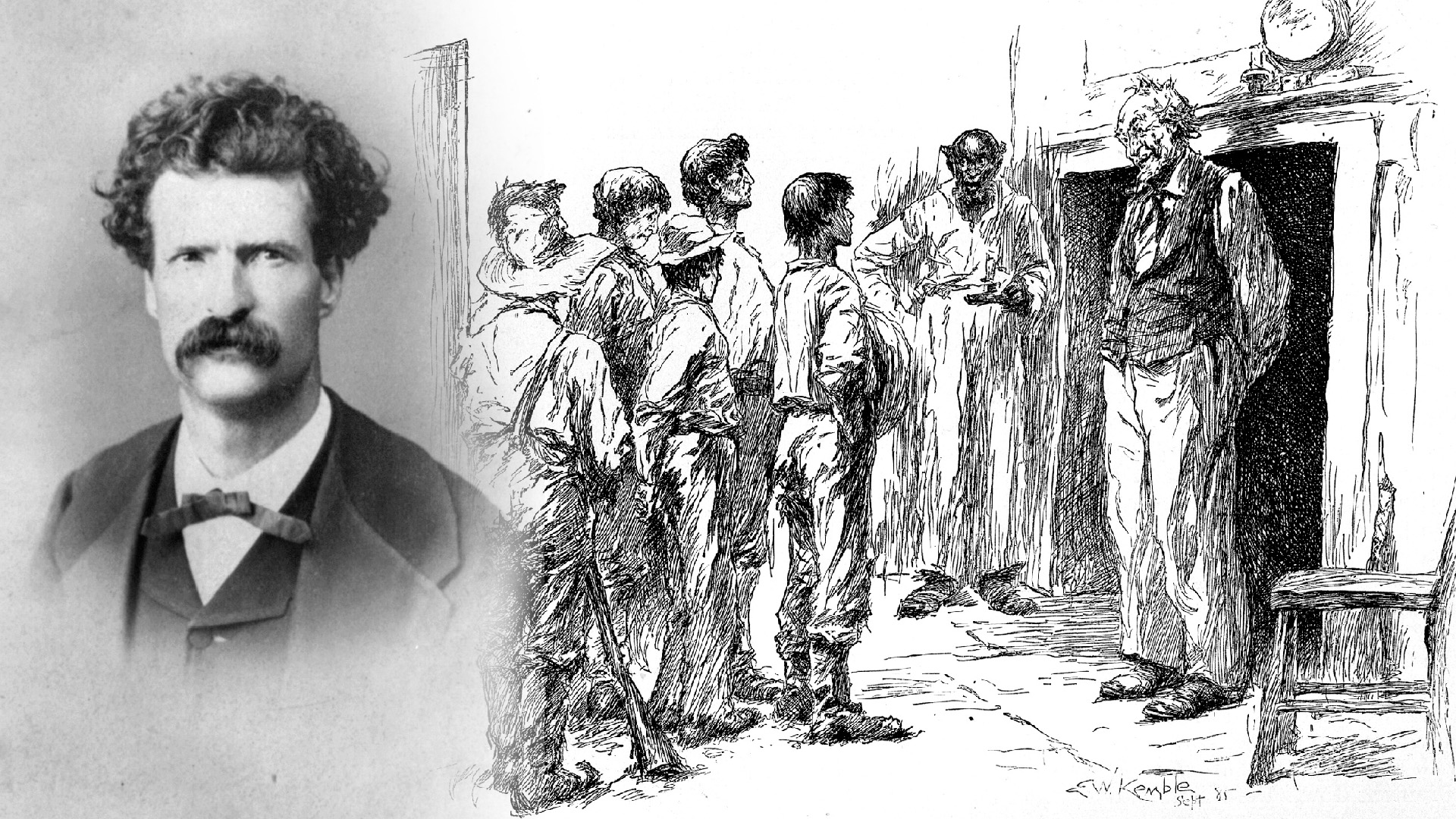
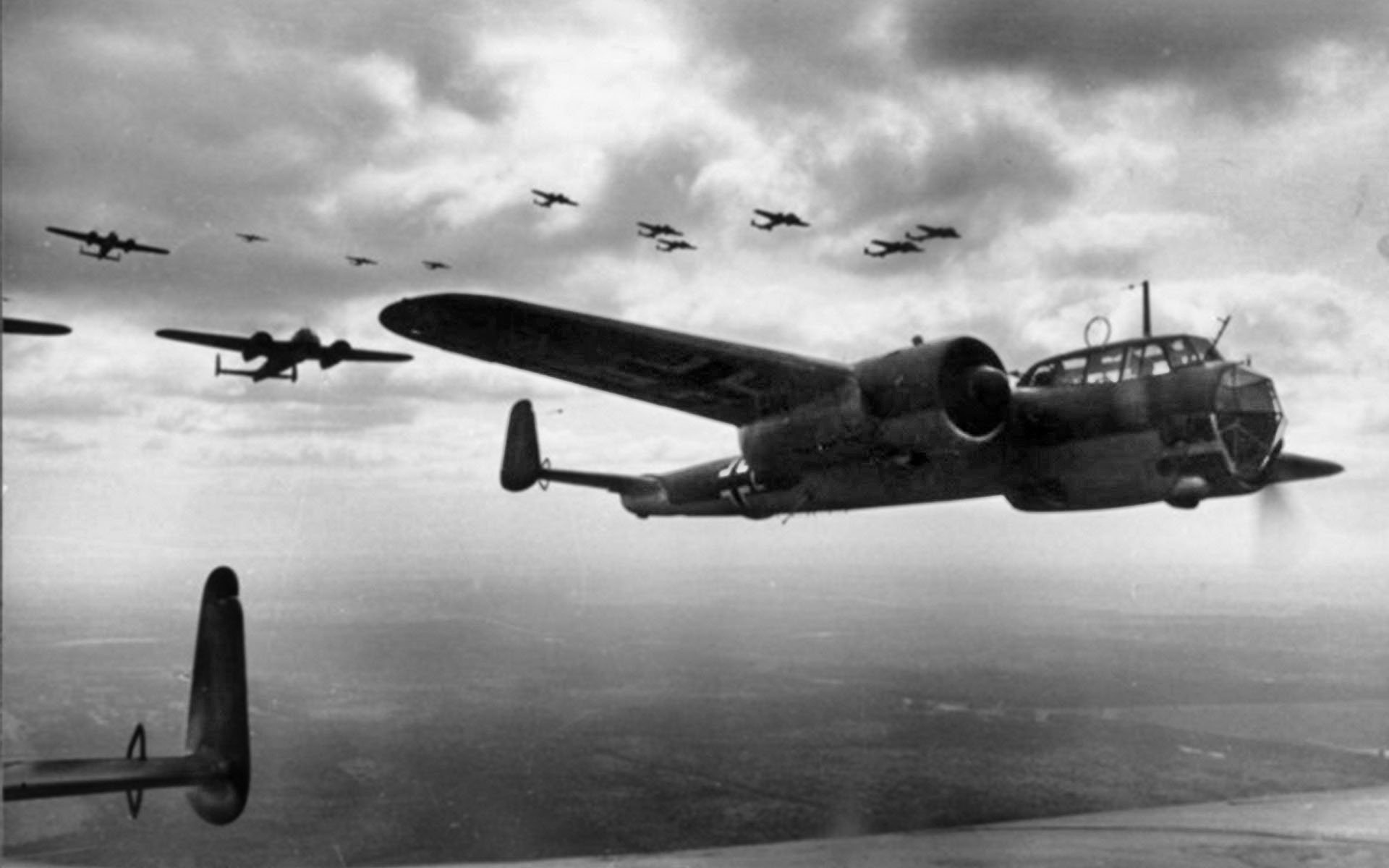
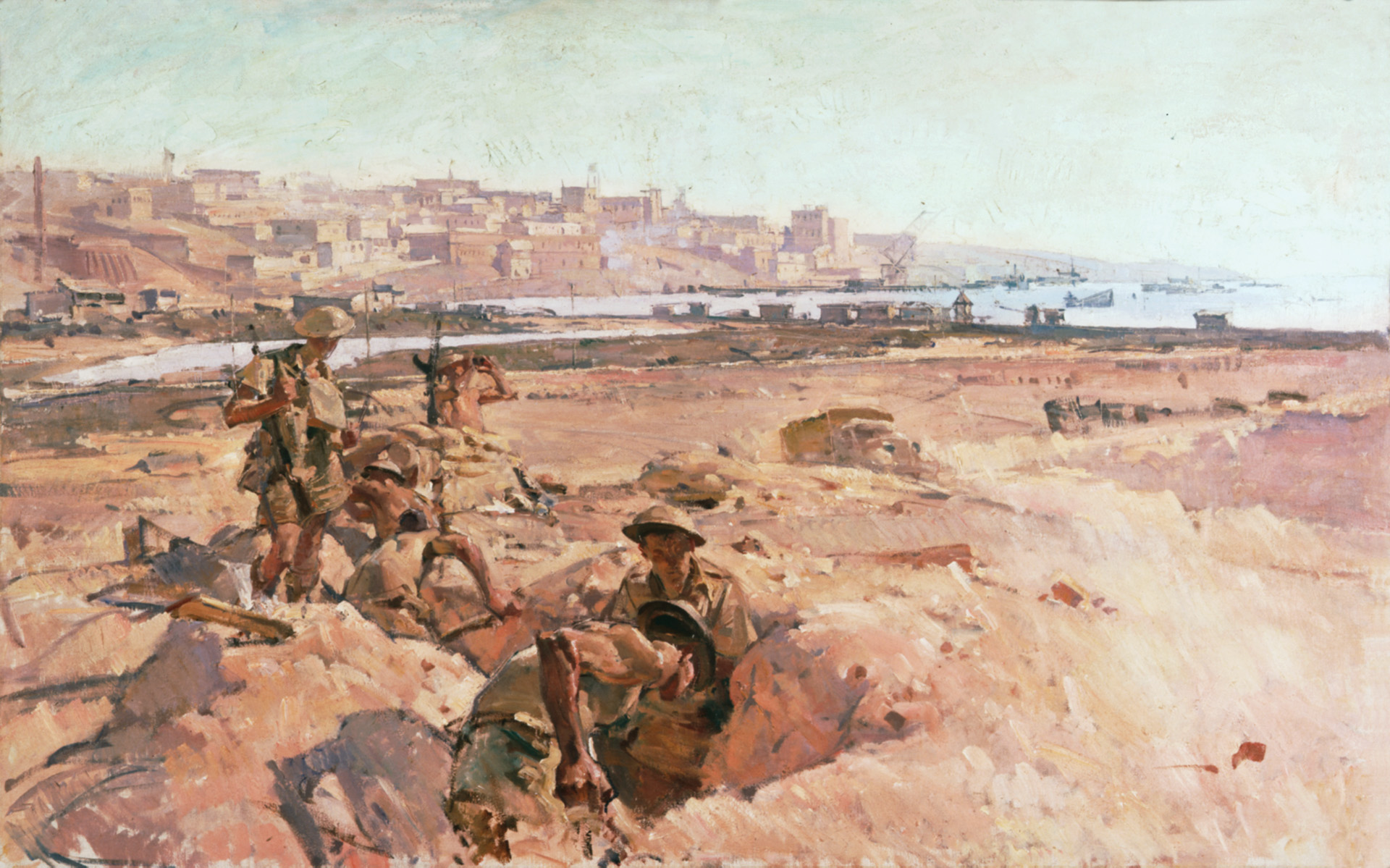
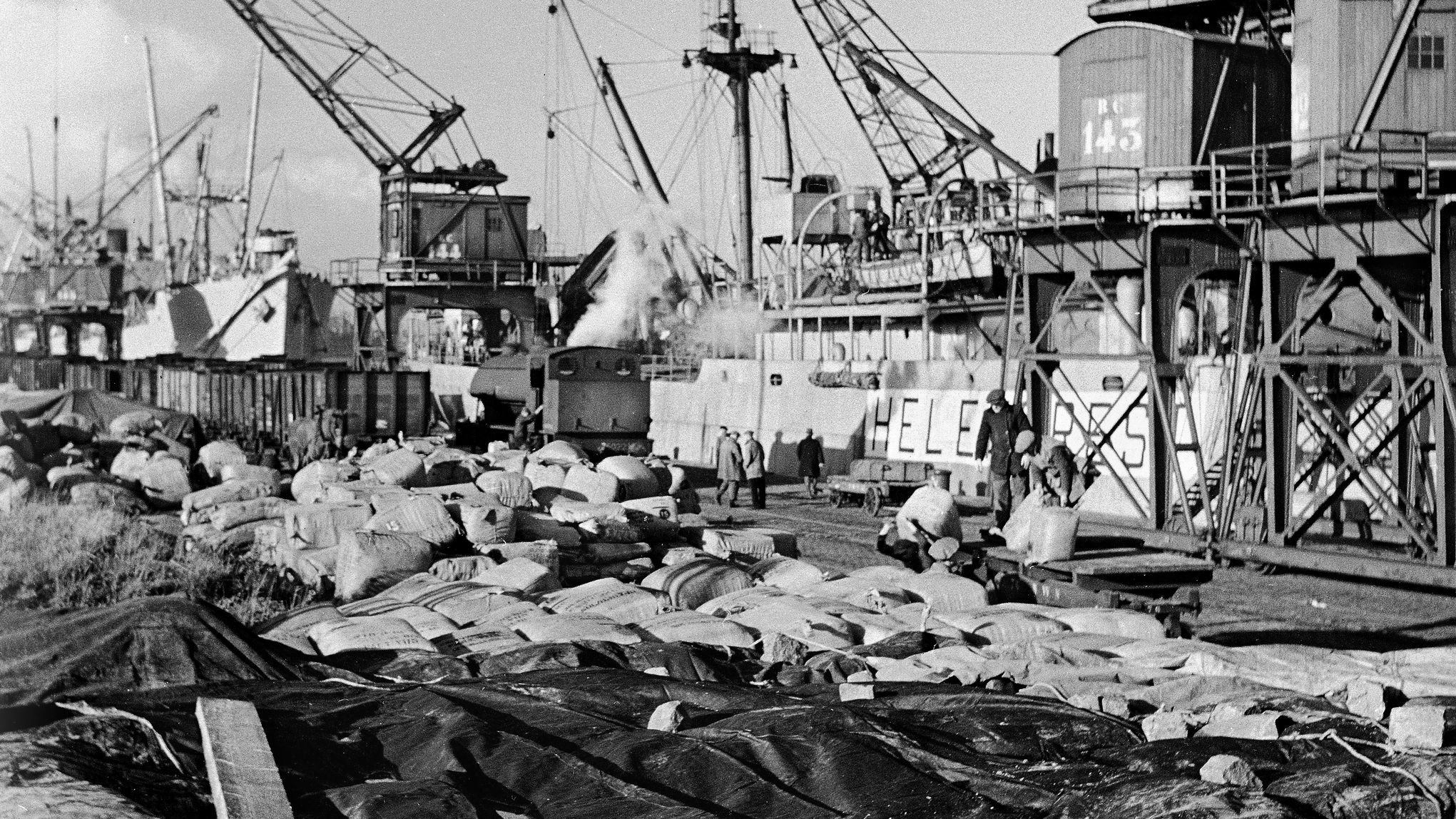
My father B.A. Fleck was USN squadron commander of one of the two B-25 units Gibraltar-based VB-114, Fleet Air Wing Seven (FAW-7) that utilized the GE version of the Leigh Light protecting the English Channel leading up to D-Day. I have the units entire history:
It wasn’t until the Americans sent the ‘Long Range’ PBY Catalina to England ( the very first one arriving at Felixstowe, in Suffolk), that changed the U-Boat menace a Great Deal, as the British had no Long range surveillance aircraft in September 1939.
I have detailed information of this event, as the ‘Cat’ couldn’t be seen as ‘aiding and abetting’ England, due to fact that America was not, at that time involved in WW2. “God Bless America” .
As an addendum, if anyone is interested I can recommend a video entitled, (the Return of “Felix”) a true story of a Catalina being flown back to Australia from Portugal, by two Qantas Pilots who I got to meet on its arrival in Cairns Queensland Australia.
Hi Ray,
I would very much appreciate details of where to find ‘The Return of Felix’ video.
Cheers,
Frank Savery, Tasmania, Australia.